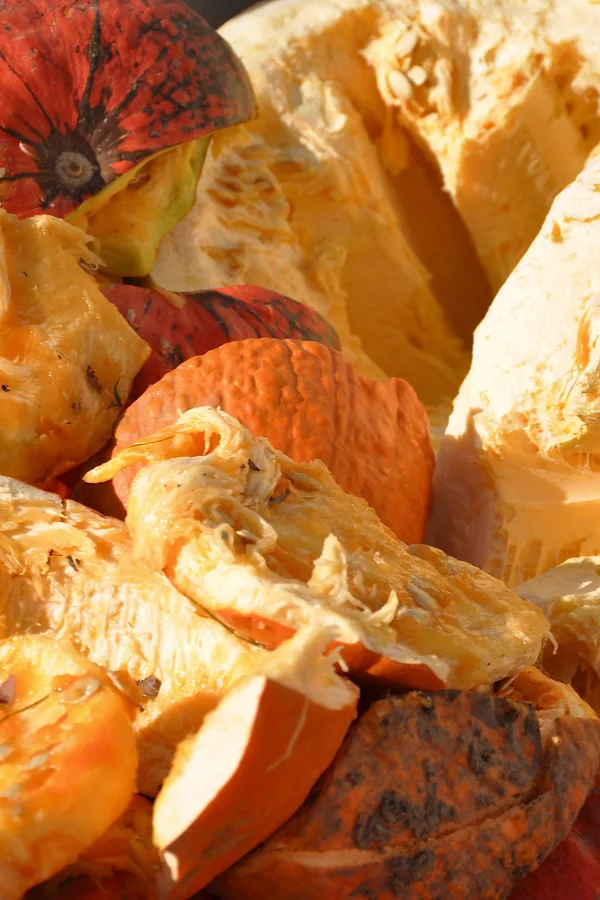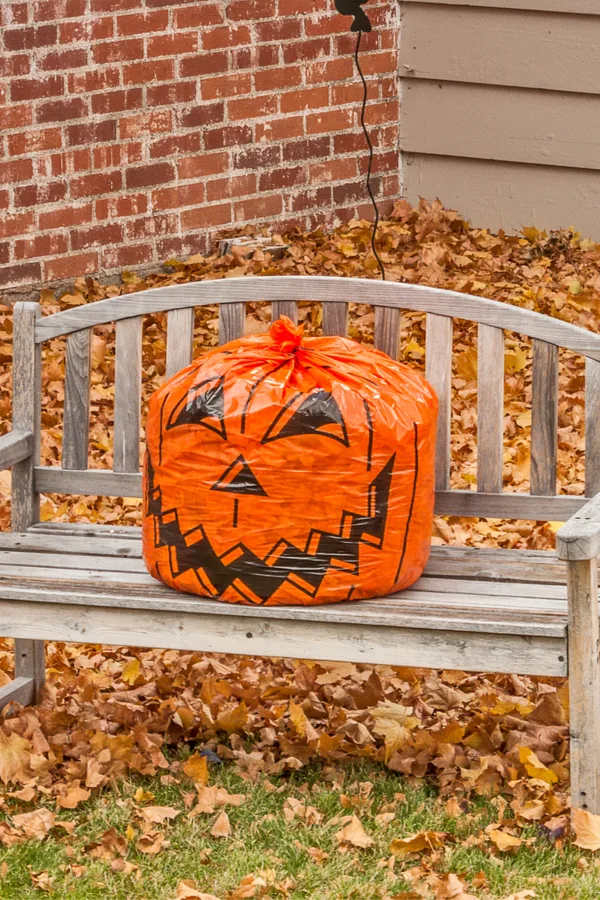Late autumn is the perfect time to create an incredible compost pile, especially when you consider all of the amazing ingredients you can find for free from fall decorations!
Autumn is the second most popular time for decorating, trailing only the Christmas season. And is it ever filled with some of the best materials for composting everywhere you look!
From pumpkins, gourds and squash, to corn stalks, flowering annuals and container plants, fall decorations are the perfect ingredients for filling a compost bin to the top. After all, even the straw from homemade scarecrows can be composted!

The sad thing is, most of these incredible ingredients never make it to a pile. Instead, they end up in trash bags and trash cans heading directly to the local landfill. In fact, by some estimates, as many well three-quarters or more of all compostable autumn decorations in end up in a landfill each year!
It is such as waste, especially when you realize when they can be easily turned into amazing compost. Compost that can help keep the soil in your garden productive, and your flowerbeds blooming stronger than ever.
The Ease Of Starting A Compost Pile From Fall Decorations
All it takes is a quick look around your neighborhood to see the bounty of fall’s compostable materials. It can take a bit of legwork, but most friends, family and neighbors are more than happy to get rid of their old decorations. Especially when they know they can help keep them from the landfill, and help your garden!
With that in mind, here is a look at which of the fall decorations are best for composting, which to leave alone, and a few helpful tips for creating a fast working pile that can have you teeming with fresh “black gold” to use all over your landscape next year.
Straw & Hay Bales
One of the most often used and discarded fall decorations are straw bales and hay bales. And both just happen to be some of the best base materials for creating a fast, hard working pile. Straw helps a pile to retain all-important moisture, and while adding solid organic matter as well.
Straw and hay are both considered brown (carbon) materials. A properly balanced compost pile should consist of around 3 parts brown material and one part green (Nitrogen).

This ratio is actually perfect for heating up and decomposing a pile quickly. And with all of the green materials available in the fall (pumpkins, gourds, green plant material, etc.), having a large influx of brown from the hay or straw can really help to give the pile a well balanced ratio.
Simply remove the bale strings and loosen the bales before adding. If you happen to have a push mower or lawn mower, chop it up before adding. This can help even more to speed up the decomposition within the pile.
Pumpkins, Gourds And Squash
All of those scary whole and carved jack-o-lanterns are great for adding “green material” to your compost pile. As can gourds, squash and other fall fruits that often decorate front porches and homes.
Not only do they break down quickly, their larger size adds a tremendous amount of bulk material to a pile. In addition, they are an excellent source of nitrogen, and add beneficial bacteria to the compost to help break it down fast.
When adding any fruit, it is always best to leave as much of the seed core out as possible. When left in, home piles do not reach internal temperatures hot enough to kill the seeds. The unfortunate result can be a lot of volunteer seeds sprouting in your compost next year.

In addition, always use caution with painted or stained pumpkins. Many paints and stains can contain harmful chemicals that can leach into your compost. To use, remove the outer painted layer of skin, otherwise keep out of the pile. Just as with the straw, chopping up any vegetable or fruit prior to adding will help to speed decomposition.
Corn Stalks
Corn stalks, just like straw and hay bales are popular for fall decorating. The fibrous stalks are another great choice for brown materials. The stalks also are beneficial because they help to create air channels in a pile with their woody make-up.
When it comes to corn stalks, chopping the foliage and stalks are a definite must before adding. If left whole, they can take months and months to break down. As for the ears of corn, the cobs are fine, but leave the kernels out. They will not break down, and can easily sprout next year through the compost.
Leaves, Leaves & More Leaves
Leaves are the mother-load of free composting materials, and they are available in abundance every fall. And when it comes to fall decorations, they are often left in their bags curbside, and ready for easy pick up!

It is important to note that some leaves are definitely better for a compost pile than other. Maple, ash, and fruit tree leaves are the best. Oak leaves on the other hand can be on the acidic side, and should only be used in moderation.
Leaves are another material that will benefit from a quick shredding by your lawnmower before adding. For more on composting leaves, see our article, How To Make Incredible Compost From Leaves.
Hanging Baskets / Mums / Fall Planters
Fall displays are often filled with colorful annual and perennial flowers. And all are tremendous addition for a fall compost pile!
Although many of autumn’s potted plants (mums in particular) can be over-wintered indoors, most are simply tossed to the curb. See : How To Overwinter Your Mums To Use Again
These plants add both rich soil and foliage to a compost pile. Simply remove them from their containers, chop up the roots and foliage a bit with a sharp knife, and toss in the pile. It is far better than simply placing at the curb to be collected with the garbage!
As an added note, it is always best to remove the heads of the blooms before adding to a pile. This keeps unwanted seed heads from sprouting in the compost the following year.

Here is to creating great fall compost pile from decorations, and to keeping these organic, all-natural materials out of our landfills! Happy composting – Jim and Mary.
Jim and Mary Competti have been writing gardening, DIY and recipe articles and books for over 15 years from their 46 acre Ohio farm. The two are frequent speakers on all things gardening and love to travel in their spare time.
As always, feel free to email us at thefarm@owgarden.com with comments, questions, or to simply say hello! You can sign up for our free email list in the subscribe now box in the middle of this article. Follow us on Facebook here : OWG Facebook. This article may contain affiliate links.
